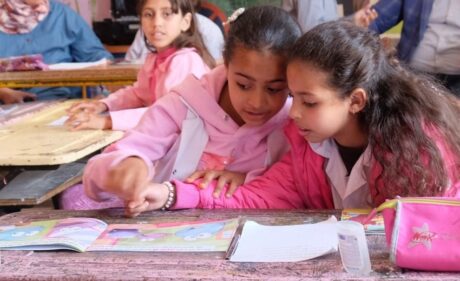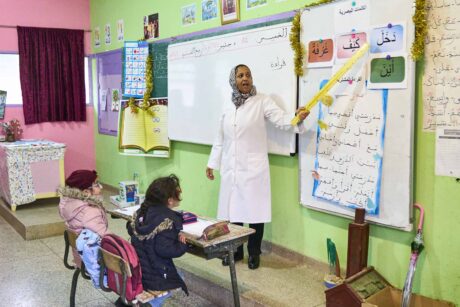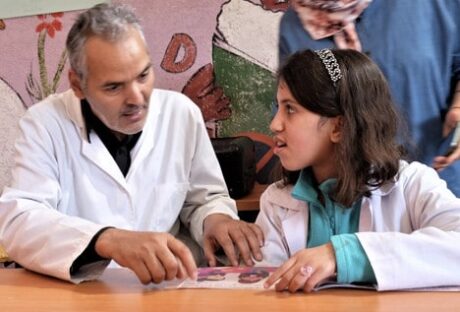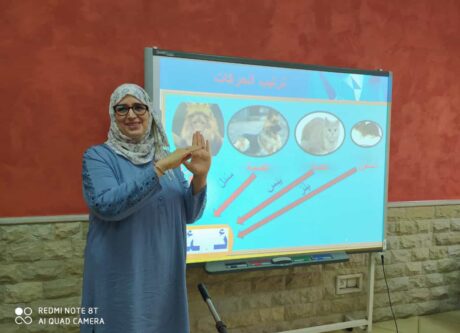Technology has long been the Achilles heel of many education systems, and the COVID-19 pandemic has brought this shortcoming to the forefront. There has been much discussion over the past twenty years about the need for schools to foster a new skill set for the twenty-first century that includes multimodal literacies, problem-solving and redefining the role of teachers. But, innovation is often restrained by budgets, digital divides, legislative gaps, the rapid evolution of technologies in the face of feasible implementation and a lack of professional development for teachers.
The time is nigh for providing educators and policymakers with more examples of what actually works with technology in real-life settings so that they can quickly work to mitigate lost learning potentials during COVID-19 and sustain effective technology use as a central part of the ongoing learning landscape.
Creating enhanced content
The central question is how to lessen disparities here and now in communities strained beyond their means and sometimes still recovering from previous disasters and instabilities.
We need tools that have the power to sustain academic rigor, accountability and collaborative learning as much as teachers and administrators do in person. Alternative education or “edutainment” can successfully transmit information and help students acquire facts, but they simply do not offer the same critical learning experiences, active citizenship and psychosocial benefits that traditional classrooms afford.
Students can gain the most — especially within distance learning — when lessons are inquiry-based, scaffolded and rooted in providing the learners with their own agency. Subject matter works best when it is not compartmentalized — when it has real-life application and adds meaning to how a learner processes and conceptualizes the world around them.
Basic strategies for dealing with COVID-19 should be encouraging students to engage in authorship. In other words, providing reflections in blogs, social media, wikis, video channels and remix art platforms. Teachers should also utilize backchannel chat platforms to connect and respond in live time with students who have questions as they work through assignments in quarantine.
Relying on alternative ways to share lessons
Information and communication technologies (ICTs) need to be designed to foster connection and hands-on activities. We also need lessons that allow for students to engage in both digital authorship and civic action as a route to resiliency. Especially during times of lockdown and social distancing, power lies in maximizing technology with more human touchpoints.
To a large extent, the right combination of SMS texts, Interactive Voice Response (IVR), and WhatsApp messaging can effectively engage many students and families during COVID-19. Additionally, radio programming is still often the most reliable means to reach the most people in many communities. This radio programming can be further transformed through supplementary mobile messaging.
An interesting model for this idea can be seen in Creative’s work on the Makhalidwe Athu program in Zambia. Here, we supported the successful launch of a mobile reading program that crowdsourced community voices to create reading materials for children who often have no access to books at home.
Through SMS, children received more than 50 local tales crowdsourced from the community. More than 4,000 community members were involved in the project. A local radio station would also regularly discuss stories or invite listeners to submit their own stories to read out and discuss. Households saw 81.4% of parents and caregivers reading the stories with their children at least once a week.
Supporting the teachers
It should go without saying that teachers need more training and comfortability with technology to facilitate virtual education. As a starting point, digital pedagogy is a constructivist approach to learning that equips teachers with instructional concepts tailored to making blended or remote classrooms more effective, inclusive and collaborative.
It has always emphasized equipping teachers with strategies on how to identify the best fitting tool for a particular lesson plan, how to be critically mindful about a technology’s impact and possible consequences, and how to reject the use of technology when it is unnecessary or reinforces rote education. It is essential training for any educator using digital technologies in any capacity.
Yet, most teachers remain untrained in this topic and its practical application. This requires more professional development and awareness of models, such as SAMR and TPACK. In many ways, digital pedagogy also requires more discussion with teachers on their changing roles as 21st Century educators — a shift away from knowledge transmission to one of supportive guidance and co-learning — and Universal Design for Learning (UDL), a proactive approach to ensuring accessibility and meeting the diverse needs of an unknown audience.
In the time of COVID-19, how can new training and exposure to these concepts occur? Our work for the Reading for Success — National Reading Program in Morocco has supported the design of a Massive Open Online Classroom (MOOC) that is specifically designed for disseminating national curriculum reforms to in-service and pre-service teachers.
However, MOOCs can vary greatly in quality and suffer from poor student retention. Universal Design for Learning is what helps create an online classroom that is inclusive, accessible and engaging, embedding intuitive navigation, peer-to-peer interaction and multiple modes of expression and engagement. Teachers can also be supported through a range of virtual coaching mobile platforms that provide instant feedback and tailored teaching and learning materials and recommendations based on their strengths and weaknesses.
Overall, the best way that global education networks can reduce vulnerabilities in the classroom is to focus on these platforms that foster expression, collaboration and accessibility. Learning is not sustainable if it does not care for the whole person. These holistic benefits to schooling are often seen as secondary benefits but are no less vital, especially towards fostering resiliency that our youth will carry throughout their lives.
Kate Williams is the Manager of Technology for Education and Economic Growth in the Creative Development Lab.



